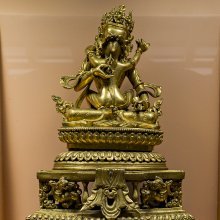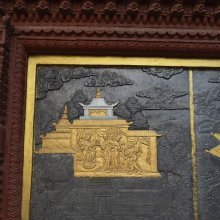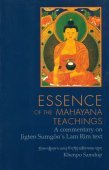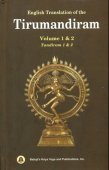Impermanence: 1 definition
Introduction:
Impermanence means something in Jainism, Prakrit. If you want to know the exact meaning, history, etymology or English translation of this term then check out the descriptions on this page. Add your comment or reference to a book if you want to contribute to this summary article.
Images (photo gallery)
In Jainism
General definition (in Jainism)
Source: The University of Sydney: A study of the Twelve ReflectionsImpermanence applies to all things, as discussed in Bhūdhardās’s composition dealing with the twelve reflections (bhāvanā or anuprekṣā), also found in the Tattvārtha-sūtra.—Accordingly, “[all things are impermanent]—King, prince or emperor, an elephant’s mahout: everyone dies someday each at his own time. (1) [there is no shelter] Powerful friends, a goddess or a god, mother, father, family: they can do nothing to stop the soul going at the moment of death. (2) [cycle of rebirth] So poor you cannot meet the cost, you suffer. You are entranced by the desire for wealth. Nowhere in saṃsāra will you find happiness no matter where you look in the world. (3) [...]”.

Jainism is an Indian religion of Dharma whose doctrine revolves around harmlessness (ahimsa) towards every living being. The two major branches (Digambara and Svetambara) of Jainism stimulate self-control (or, shramana, ‘self-reliance’) and spiritual development through a path of peace for the soul to progess to the ultimate goal.
See also (Relevant definitions)
Full-text (+180): Anicca, Anityata, Duhkhasatya, Anitya, Dukkha, Vijjabhagiya Sutta, Vipassana, Nashvarate, Aniccanupassana, Anityate, Aniccata Sutta, Khatvanga, Anityasamjna, Kleshamula, Bhavabhavana, Nandikkhaya Sutta, Vipallasa Sutta, Apramanadosha, Vishararu, Mundamala.
Relevant text
Search found 158 books and stories containing Impermanence; (plurals include: Impermanences). You can also click to the full overview containing English textual excerpts. Below are direct links for the most relevant articles:
Maha Prajnaparamita Sastra (by Gelongma Karma Migme Chödrön)
I. The concept of impermanence (anitya-saṃjñā) < [Chapter XXXVII - The Ten Concepts]
II. Synonymity of the three words < [Part 2 - Understanding dharmatā and its synonyms]
Sarvāstivādin-Sautrāntika Debate on Time < [Part 1 - Mahāyānist list of the eighteen special attributes of the Buddha]
Dhammapada (Illustrated) (by Ven. Weagoda Sarada Maha Thero)
Verse 148 - The Story of Nun Uttarā < [Chapter 11 - Jarā Vagga (Old Age)]
Verse 277-279 - The Story of Five Hundred Monks < [Chapter 20 - Magga Vagga (The Path)]
Verse 6 - The Story of Kosambi Monks < [Chapter 1 - Yamaka Vagga (Twin Verses)]
The Great Chariot (by Longchenpa)
Part 1 - How those who wish to cross over from cyclic existence should think of impermanence < [D. The final summary]
Part 3 - There is impermanence because change is the nature of things < [B. The extended explanation]
Part 5 - Teaching impermanence through teaching how the victorious ones and their sons attain nirvana < [B. The extended explanation]
Fundamentals of Vipassana Meditation (by Venerable Mahāsi Sayādaw)
Mandukya Upanishad (Gaudapa Karika and Shankara Bhashya) (by Swami Nikhilananda)
Mandukya Karika, verse 4.60 < [Chapter IV - Alatashanti Prakarana (Quenching the firebrand)]
Visuddhimagga (the pah of purification) (by Ñāṇamoli Bhikkhu)
Insight (1): Knowledge of Rise and Fall—II < [Chapter XXI - Purification by Knowledge and Vision of the Way]
The Triple Gateway to Liberation < [Chapter XXI - Purification by Knowledge and Vision of the Way]
The Eighteen Principal Insights < [Chapter XX - Purification by Knowledge and Vision of the Path and the Not-path]
Related products



